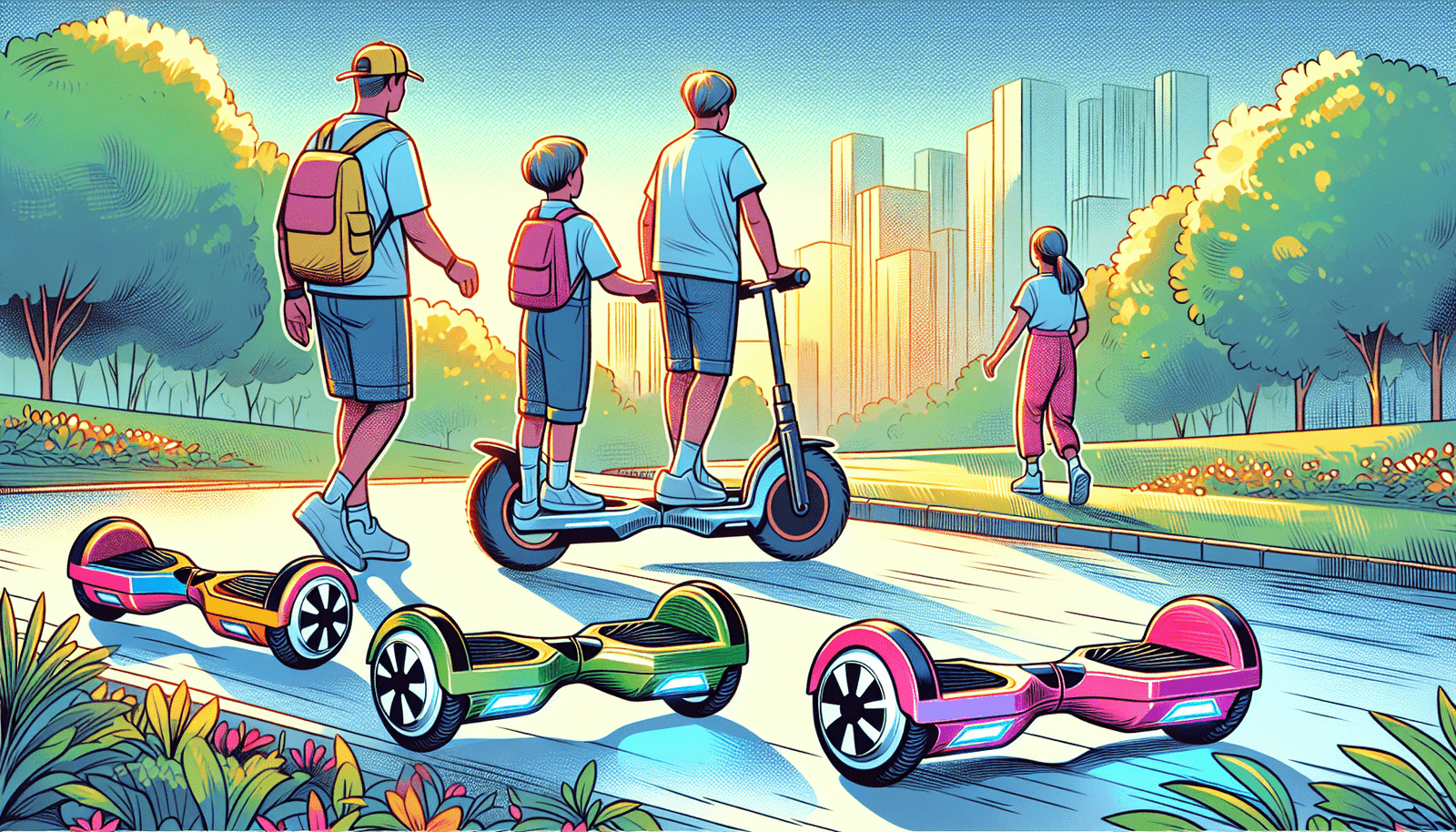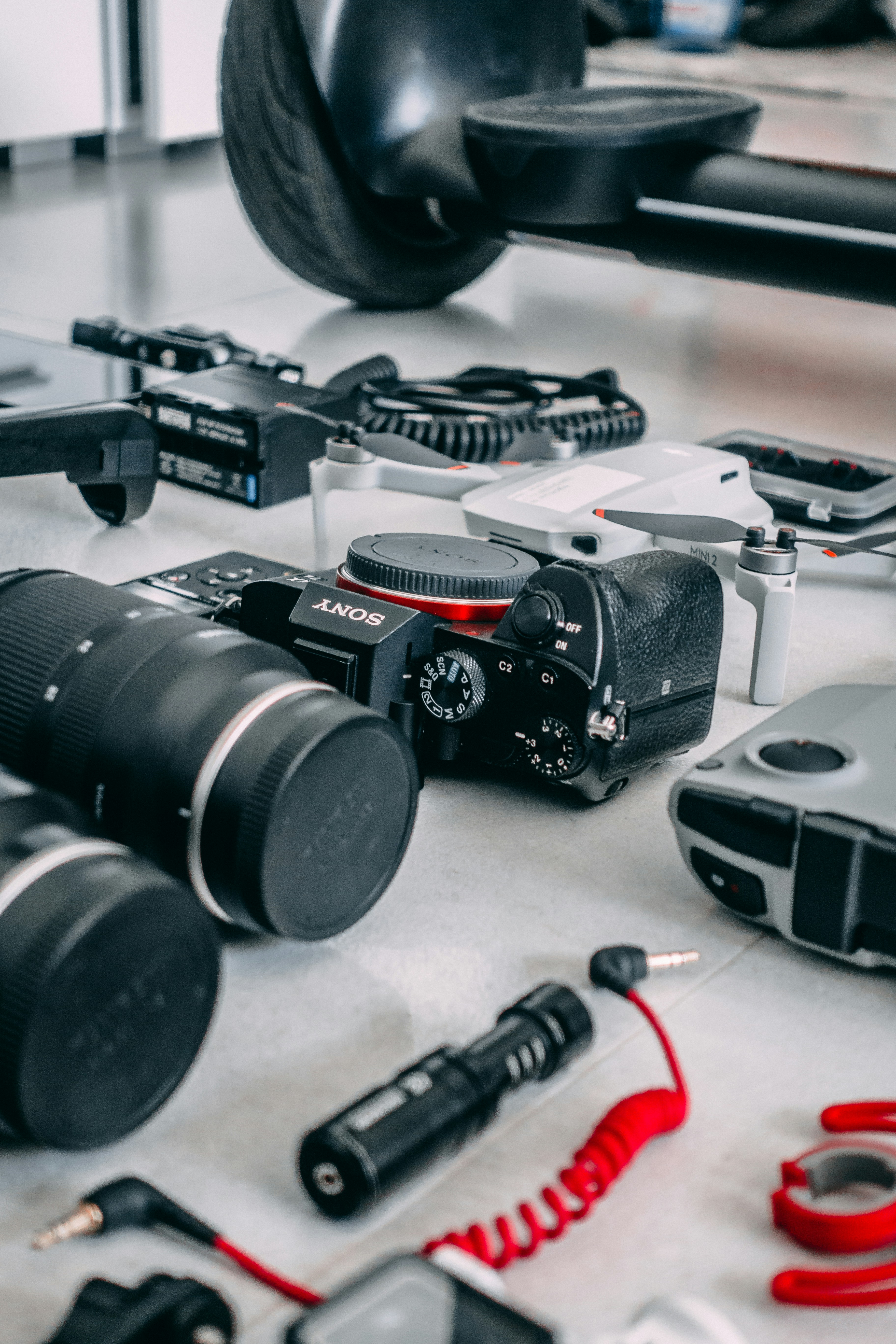Have you ever wondered if you can ride a hoverboard alongside your child, each of you on separate hoverboards? The idea might sound thrilling—a unique bonding experience in this age of technological wonders. But before you both rush to jump onto these futuristic devices, there are essential factors to consider, especially regarding safety, appropriate ages, and general guidelines.
Understanding Hoverboards
Hoverboards have gained popularity for their sleek design and ease of use, but it’s crucial to understand what they are and how they work. A hoverboard is a self-balancing scooter, typically powered by lithium-ion batteries. They consist of two motorized wheels connected by a platform where the rider stands. The rider can control the hoverboard by leaning forward or backward and steering through subtle foot movements.
Components of a Hoverboard
- Gyroscopic Sensors: These help maintain balance.
- Motors: Propel the hoverboard forward or backward.
- Battery: Usually a rechargeable lithium-ion battery.
- Chassis: The main frame that supports the rider.
- Foot Pads: Sensitive to pressure, enabling controls through foot movements.
Knowing their basic anatomy can help you make an informed choice about whether they are suitable for you and your child.
Age and Maturity Considerations
Before considering riding a hoverboard with your child, it’s essential to assess whether the child is of an appropriate age and maturity level. While manufacturers often quote a minimum age of 8 years old, this can vary significantly based on the child’s coordination, balance, and overall readiness.
Recommended Ages for Hoverboard Use
| Age Group | Recommendation |
|---|---|
| 6-8 years | Not recommended for solo riding; use supervision if attempted. |
| 9-12 years | Can ride with adult supervision; ensure proper safety gear. |
| 13 years and above | Generally safe to ride; still advisable to use safety equipment. |
Safety Gear and Precautions
You wouldn’t send your child out on a bike without a helmet, and the same caution should apply to hoverboards. From helmets to knee pads, various safety gear can significantly reduce the risk of injury.
Essential Safety Gear
- Helmet: Preferably one designed for sports activities.
- Knee and Elbow Pads: To protect joints in case of falls.
- Wrist Guards: Provide the necessary protection for hands and wrists.
- Proper Footwear: Closed-toe shoes that provide good grip.
These items are not merely recommendations but necessities for ensuring safety while riding.
Assessing the Environment
The environment where you plan to ride with your child plays a vital role in ensuring safety and enjoyment. Ensure the chosen area is spacious, free of heavy traffic, and has a smooth surface.
Ideal Places to Ride
| Environment Type | Safety Level |
|---|---|
| Parks | High if free from obstacles and crowded places. |
| Neighborhood Streets | Moderate; best if streets are quiet and have low traffic. |
| Indoor Spaces | Generally safe if spacious and free from sharp objects. |
| Busy Roads | Not recommended; high risk due to traffic. |
Riding in a safe environment can make the experience more enjoyable and less stressful for both of you.
Choosing the Right Hoverboard
Not all hoverboards are created equal. Different models come with various features and capabilities. It’s best to pick one that suits both your needs and your child’s.
Hoverboard Features to Consider
- Weight Limit: Ensure the hoverboard can safely support the rider’s weight.
- Battery Life: Longer battery life means more riding time.
- Speed Settings: Some hoverboards come with customizable speed settings, which can be beneficial for beginners.
- UL Certification: Indicates the hoverboard has passed rigorous safety tests.
By considering these features, you can select a hoverboard that is suitable for both you and your child.
Riding Techniques and Maintenance
Hoverboards require some practice to master, and riding techniques can vary based on the model and terrain. Taking the time to learn proper riding techniques can enhance the experience and ensure safety.
Basic Riding Tips
- Mounting and Dismounting: Practice mounting by stepping on one side first, then the other. For dismounting, step backward, not forward.
- Balancing: Keep your body relaxed and look forward, not down.
- Turning: Shift your weight gently to make smooth turns.
- Stopping: Lean back slightly to slow down and eventually stop.
Maintenance Checklist
- Battery Care: Charge fully but avoid overcharging. Keep away from extreme temperatures.
- Wheel Check: Inspect wheels for wear and tear regularly.
- Cleaning: Wipe down the hoverboard to remove dirt and debris.
Proper maintenance can extend the lifespan of your hoverboard and ensure it continues to function safely.
Benefits of Riding Together
Riding hoverboards together can offer more than just fun. It can serve as a great bonding activity and help build your child’s physical skills.
Physical Benefits
- Improves Balance: Enhances overall balance and coordination.
- Encourages Outdoor Activity: Promotes healthy physical activities.
- Develops Motor Skills: Helps in developing fine motor skills.
Emotional Benefits
- Bonding Time: Shared activity strengthens emotional bonds.
- Builds Confidence: Learning to ride builds self-esteem and confidence.
- Generates Fun: Creates memorable experiences that both of you can cherish.
The advantages go beyond the physical and can positively impact emotional well-being.
Common Concerns and Solutions
Even with the proper precautions and equipment in place, you might still have concerns about riding hoverboards. Common issues range from technical problems to worries about crashes and falls.
Addressing Technical Concerns
- Battery Malfunctions: Check the manufacturer’s warranty and customer reviews before purchasing. Keep batteries well-maintained.
- Overheating: Avoid riding for extended periods, especially during hot weather. Take breaks.
- Motor Issues: Regularly inspect motors and seek professional help if you notice any irregularities.
Preventing Injuries
- Follow Manufacturer Guidelines: Adhere strictly to the weight and speed recommendations.
- Stay Alert: Keep an eye on your child and maintain communication.
- Practice Makes Perfect: Allow sufficient time to practice in a controlled environment before moving to more challenging terrains.
Being aware of these issues and how to address them can make riding hoverboards a safer experience for both of you.

Alternatives to Hoverboards
If you find that riding hoverboards might not be suitable for you and your child, there are several alternative devices that can offer similar enjoyment and benefits.
Comparable Options
| Device | Features and Benefits |
|---|---|
| Electric Scooters | Easier to balance; come with handle bars for added stability. |
| Bikes | A classic option suitable for all ages; well-established safety gear. |
| Roller Skates | Improves balance and coordination; often come with comprehensive safety kits. |
| Skateboards | Similar balance skills required; can be easier to learn for older children. |
Each of these options has its own set of benefits and could serve as an excellent alternative for a fun and active lifestyle.
Final Thoughts
The experience of riding hoverboards with your child can be a rewarding way to spend time together, offering both fun and developmental benefits. However, it’s crucial to prioritize safety at all times. Making informed decisions regarding age appropriateness, safety gear, environment, and the choice of hoverboard can significantly enhance the riding experience. Remember, the goal is to enjoy quality time together while ensuring that both of you remain safe and sound. So, gear up and make those rides memorable and fun!





